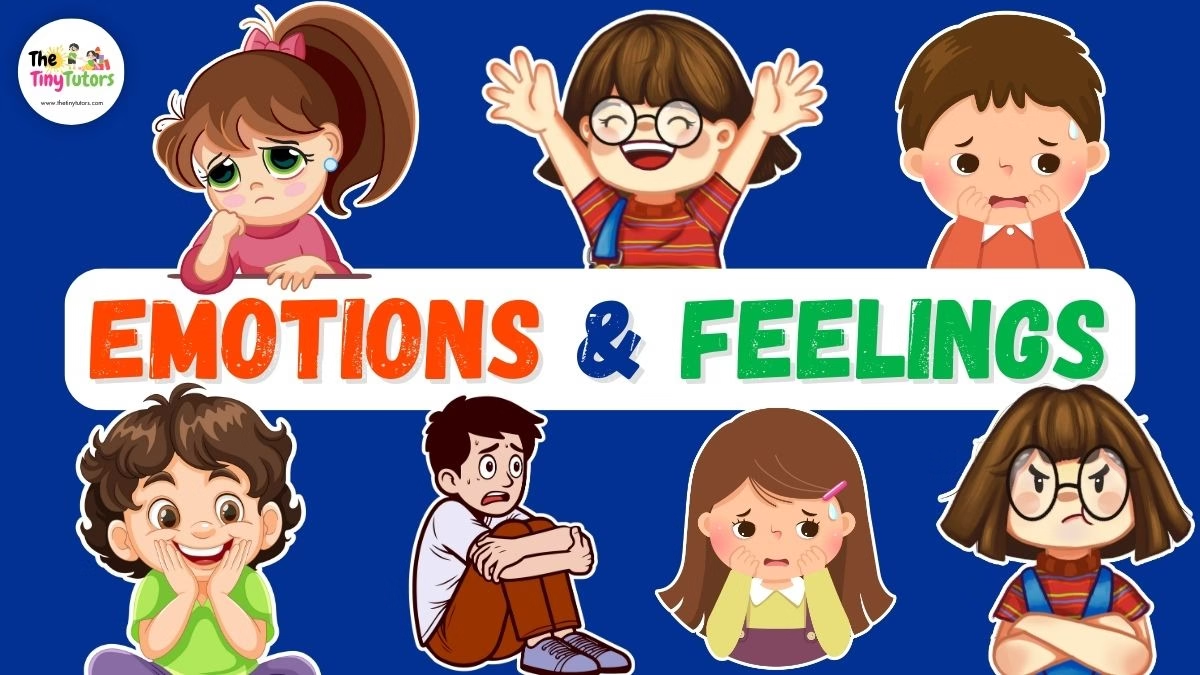Welcome to our fun-filled guide on Emotions and Feelings for Kids! Emotions are like colorful paint on the canvas of our lives, helping us understand ourselves and connect with others. Whether you’re feeling happy, sad, angry, or surprised, it’s important to recognize and express these feelings. Let’s embark on this emotional adventure together!
Emotions are automatic reactions our bodies have to different situations. They happen quickly and can be felt in our bodies, like a racing heart when we’re scared or a warm glow when we’re happy.
Feelings are how we think about and understand our emotions. They’re our personal experience of what we’re going through. For example, you might feel excited about a birthday party or nervous before a big test.
Understanding emotions and feelings helps us know ourselves better and interact kindly with others.
Read more: Most Famous Festivals in the World: A Complete List of International Celebrations
Happy – The Sunshine Emotion
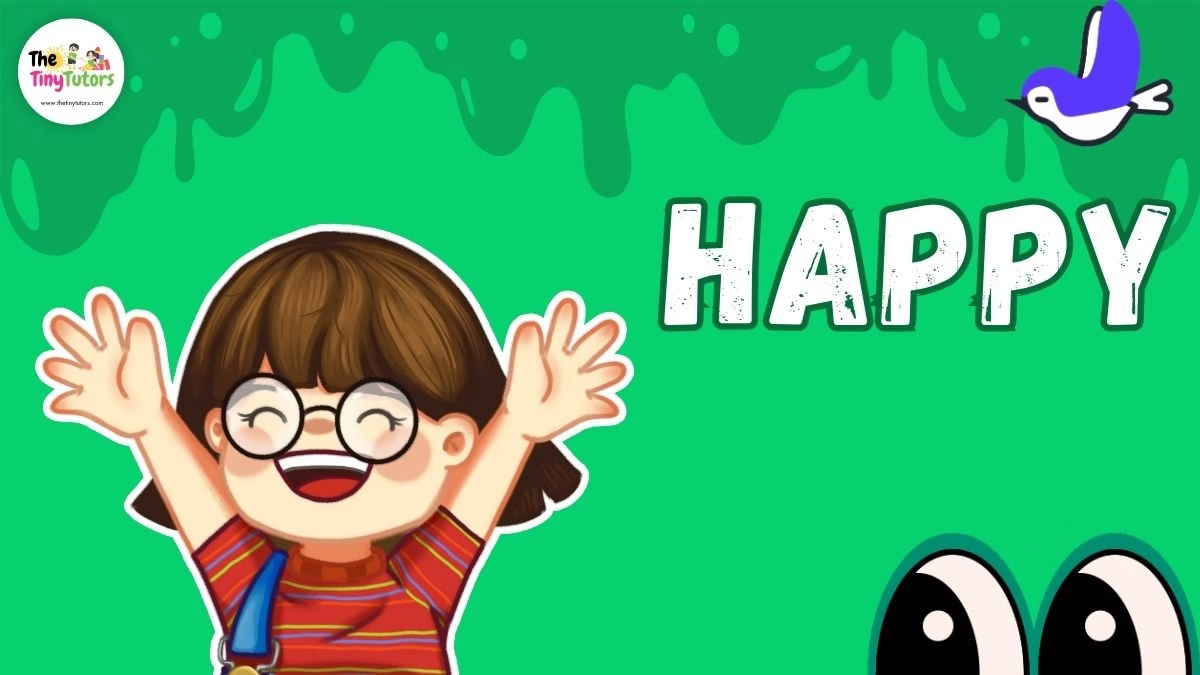
What Does Happy Mean?
In the world of emotions and feelings for kids, happy is like a bright sunny day inside your heart. It’s the feeling you get when something nice happens — like playing your favorite game, hugging your pet, or enjoying a yummy ice cream.
What Makes Us Feel Happy?
Let’s look at a few things that bring happiness — one of the most cheerful emotions and feelings for kids:
-
Getting a kind compliment
-
Reaching a goal or doing something well
-
Spending time with family and friends
-
Hearing your favorite song
How Does Happy Feel in Your Body?
Our body shows happiness in fun ways. Some signs include:
-
Smiling or laughing a lot
-
Feeling light and full of energy
-
Wanting to dance, sing, or play
These are all signs of one of the best emotions and feelings for kids!
How to Show Happiness
Here’s how you can express this wonderful emotion:
-
Share your toys or stories with others
-
Use kind and cheerful words
-
Celebrate small wins, like finishing homework or helping at home
Fun Fact!
Did you know that smiling—even if you’re not feeling very happy—can actually boost your mood? That’s the amazing power of emotions and feelings, especially for kids. A smile can trick your brain into thinking something joyful is happening!
Sad – The Cloudy Emotion
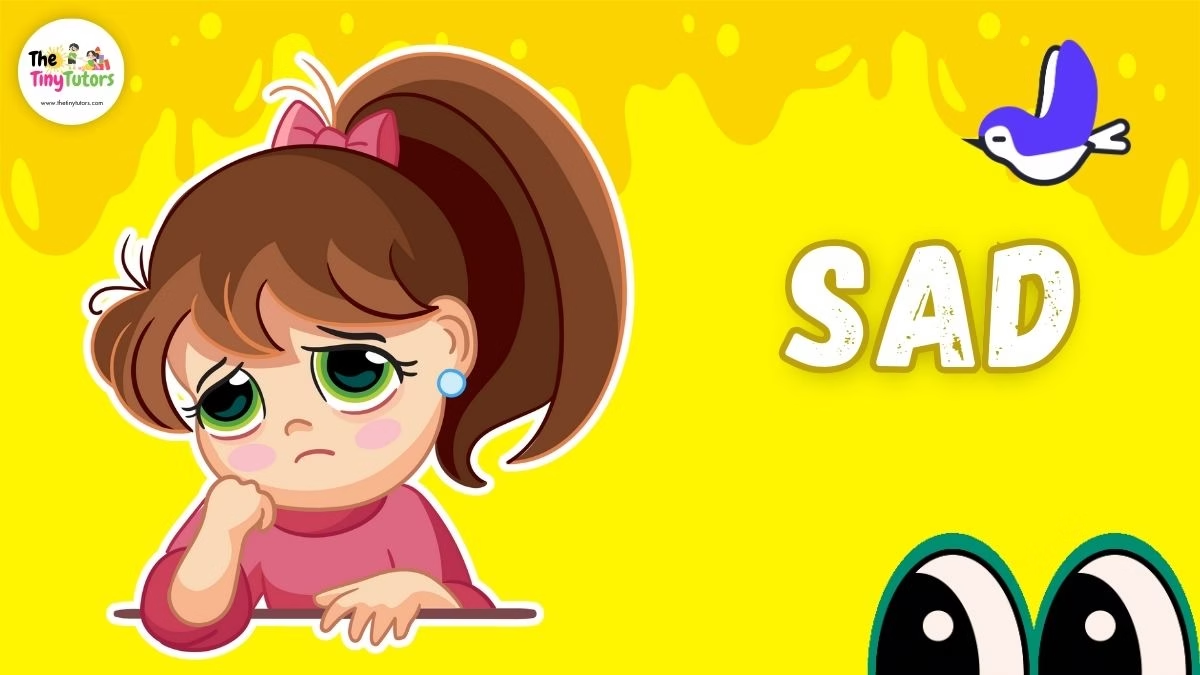
️ What Does Sad Mean?
In the journey of understanding emotions and feelings for kids, sad is like a cloudy day in your heart. It’s the feeling we get when things don’t go the way we hoped — like losing a favorite toy, missing a friend, or when plans suddenly change.
What Makes Us Feel Sad?
Everyone feels sad sometimes. It’s one of the most common emotions and feelings for kids. Some reasons might be:
Feeling disappointed about something
Saying goodbye to someone we care about
Feeling left out or not being included
These moments can make our hearts feel heavy, and that’s okay!
How Does Sadness Show in Our Bodies?
Sometimes, our bodies show how we’re feeling without using words:
We might cry or frown
We might want to spend time alone
Our voice might become soft or quiet
These are all normal ways sadness — one of the many emotions and feelings for kids — shows up.
️ How to Let Out Sad Feelings
There are healthy ways to deal with sadness. Try these ideas:
Talk to someone who makes you feel safe, like a parent or teacher
Draw pictures or write about what’s on your mind
Take deep breaths and remind yourself that it’s okay to feel sad sometimes
Learning about emotions and feelings for kids helps you handle tough moments better.
Fun Fact!
Did you know that crying can actually help you feel better? That’s right! When we cry, our body releases stress, and we often feel calmer afterward. It’s one of the ways emotions and feelings for kids help us heal.
Visit our channel: Emotions and Feelings for Kids | Learn About Different Types of Emotions!
Angry – The Volcano Emotion
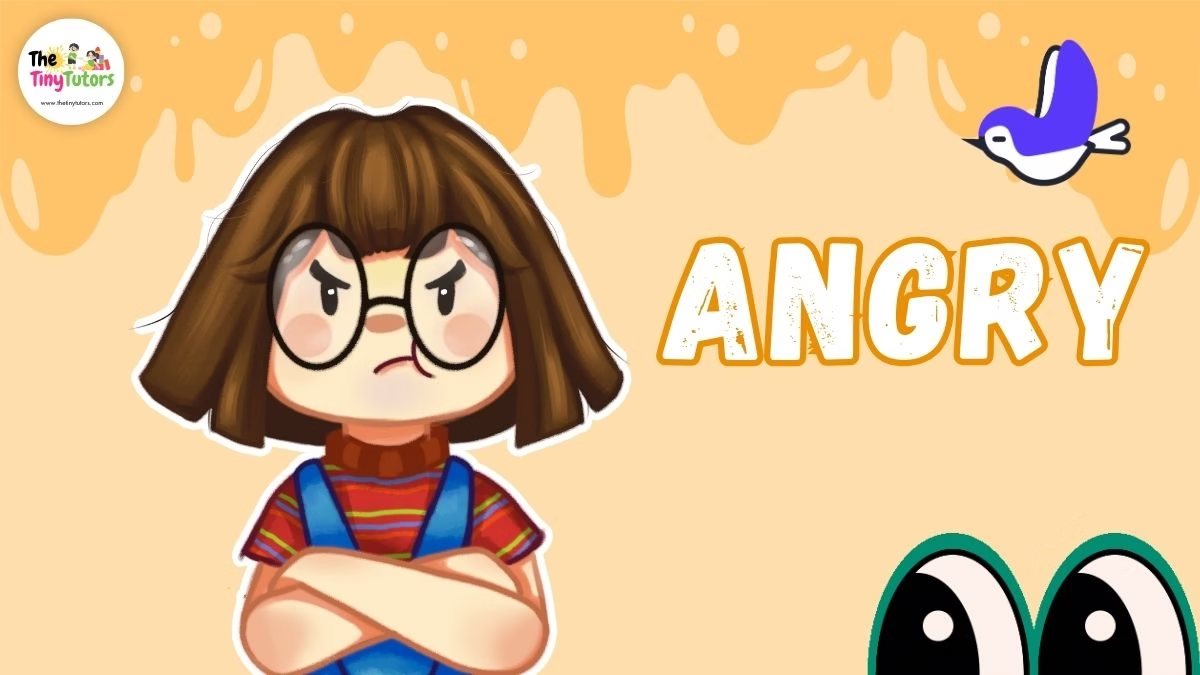
What Is Anger?
In the world of emotions and feelings for kids, angry is like a volcano bubbling inside you. It can feel like a storm or a volcano building up inside. This emotion shows up when things feel unfair or when something bothers you — like if someone takes your toy without asking or doesn’t let you speak.
Why Do We Get Angry?
There are different reasons why anger happens. Some examples include:
When something doesn’t seem fair
When people don’t understand you
When you want something and can’t have it right away
These experiences are all part of learning how emotions and feelings for kids work.
What Anger Feels Like
When you’re angry, your body may act in ways you don’t expect. Here are some signs:
Your fists or jaw might get tight
You might speak loudly or even yell
You could feel very warm or tense inside
These signs help kids understand how emotions and feelings for kids show up in the body.
️ What You Can Do When You’re Angry
Here are multiple smart and safe ways to express anger:
Take deep breaths to help yourself cool down
Use calm words to tell someone how you feel
Step away for a bit to give yourself some room to breathe.
Learning to handle anger is a healthy part of understanding emotions and feelings for kids.
Cool Fact!
Did you know that when you’re angry, your brain tells your body to get ready for action? That’s why your heart beats faster and your muscles tighten. Deep breathing tells your body that it’s safe now. This is one of the awesome ways our bodies react to emotions and feelings for kids.
Fear – The Cautious Emotion

️What Is Fear?
Fear is one of the natural emotions and feelings for kids. It’s what we feel when something seems unsafe or unknown — like hearing a strange noise in the dark or seeing a big shadow in your room. This feeling helps protect us and keeps us alert.
What Can Cause Fear?
Fear can happen for many reasons, even when there’s no real danger. Here are a few common causes:
Being in a place you don’t know
Imagining something scary, like a monster under the bed
Facing something real that feels dangerous, like a growling dog or a big storm
All of these are part of learning about emotions and feelings for kids and how they affect us.
How Fear Affects Your Body
When you’re scared, your body changes to help keep you safe:
Your heart may beat faster
You might breathe quickly or feel sweaty
Your eyes could get wide, and you may feel like you can’t move
These are normal signs of fear in the world of emotions and feelings for kids.
How to Handle Being Scared
Feeling afraid isn’t bad — it just means your brain is trying to protect you The important thing is learning how to handle it. Here’s what you can try:
Talk to a parent, teacher, or friend about what’s scaring you
Learn more about what you’re afraid of — sometimes things are less scary when we understand them
Try calming tricks like deep breathing or counting to ten
Handling fear well is a big part of understanding emotions and feelings for kids.
Fun Fact!
Fear is like your brain’s safety alarm — it warns you when something might be wrong. But sometimes our imagination makes things seem scarier than they really are. That’s why learning about emotions and feelings for kids helps you know when to listen to fear and when to calm it down.
Surprised – The Unexpected Emotion
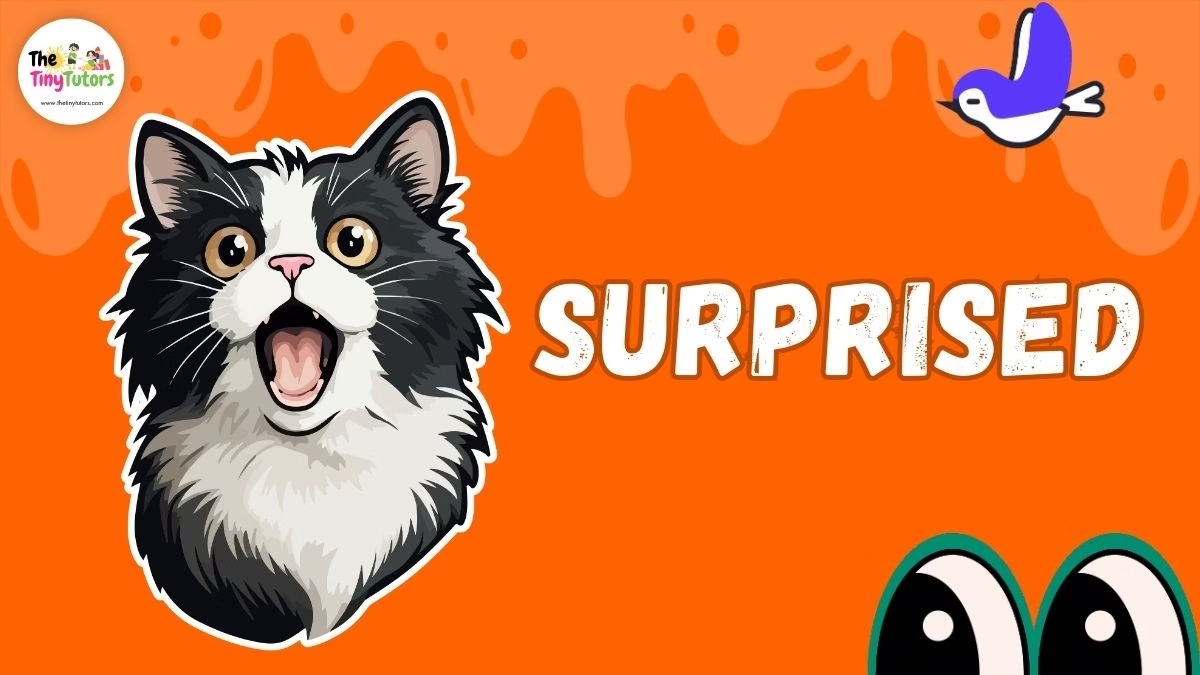
What Does “Surprised” Mean?
In the world of emotions and feelings for kids, surprised is what you feel when something happens that you didn’t see coming. It could be something fun like a surprise party or something sudden like a loud noise.
Why Do We Feel Surprised?
This emotion usually shows up when:
-
Something unexpected happens
-
Plans change without warning
-
Something unusual catches your attention
These surprise moments are a normal part of emotions and feelings for kids.
How Your Body Reacts to Surprise
When you’re surprised, your body reacts fast:
-
Your eyebrows might lift, and your mouth may open wide
-
You might gasp or say “Wow!”
-
You may jump or step back suddenly
These signs show how surprise fits into emotions and feelings for kids.
What Can You Do When You’re Surprised?
-
Tell someone about what surprised you
-
Smile or laugh if it was a good surprise
-
Ask questions to understand what happened
Being surprised helps us grow, and it’s one of the most fun emotions and feelings for kids to explore!
Fun Fact!
Surprise can mix with other emotions and feelings for kids — like joy, fear, or even confusion. That’s what makes it so unique!
Confused – The Puzzled Emotion
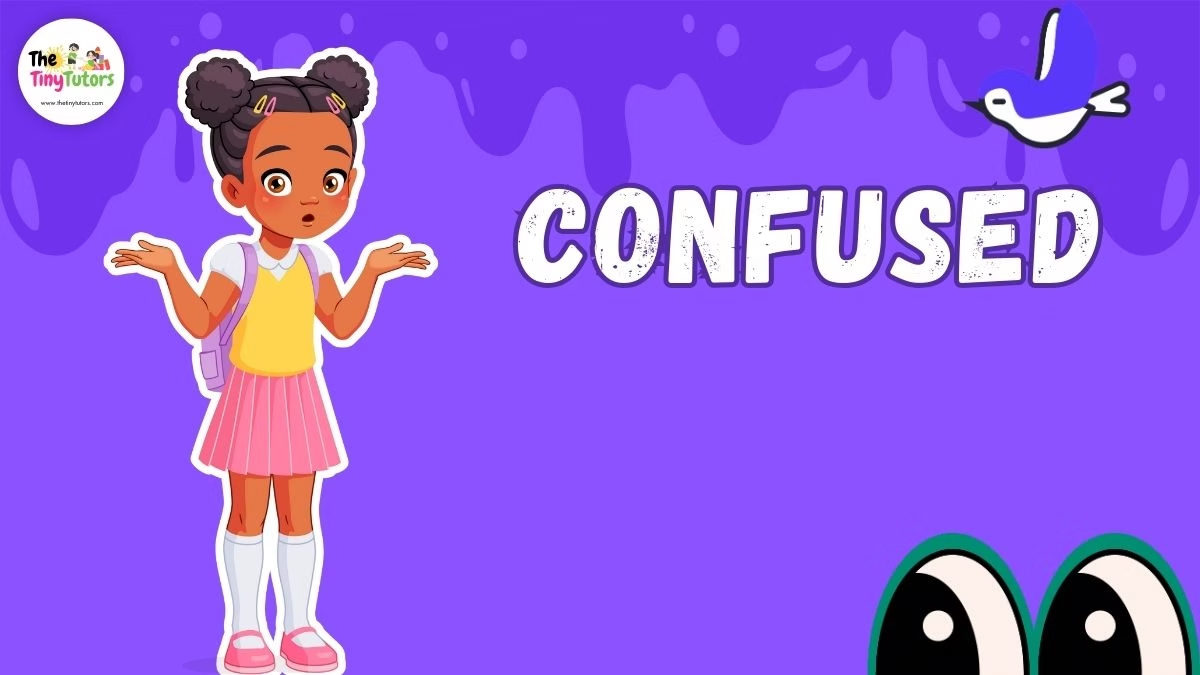
What Does “Confused” Mean?
Confusion is one of the most curious emotions and feelings for kids. It’s what you feel when something doesn’t make sense, like tricky homework or when someone gives you unclear instructions.
What Makes Us Feel Confused?
-
Missing or unclear information
-
A hard question or complicated problem
-
A sudden change in plans
These situations can lead to confusion, and they’re all part of the everyday emotions and feelings for kids experience.
Body Language of Confusion
When you’re confused, your body shows it:
-
You might wrinkle your forehead or tilt your head
-
You could ask lots of questions
What Helps When You Feel Confused?
-
Ask someone to explain again
-
Take your time to think things through
-
Break big problems into smaller parts
Fun Fact!
Confusion is not a bad thing — it’s your brain saying, “I want to figure this out!” It’s one of the most helpful emotions and feelings for kids that lead to growth.
Excited – The Bubbly Emotion
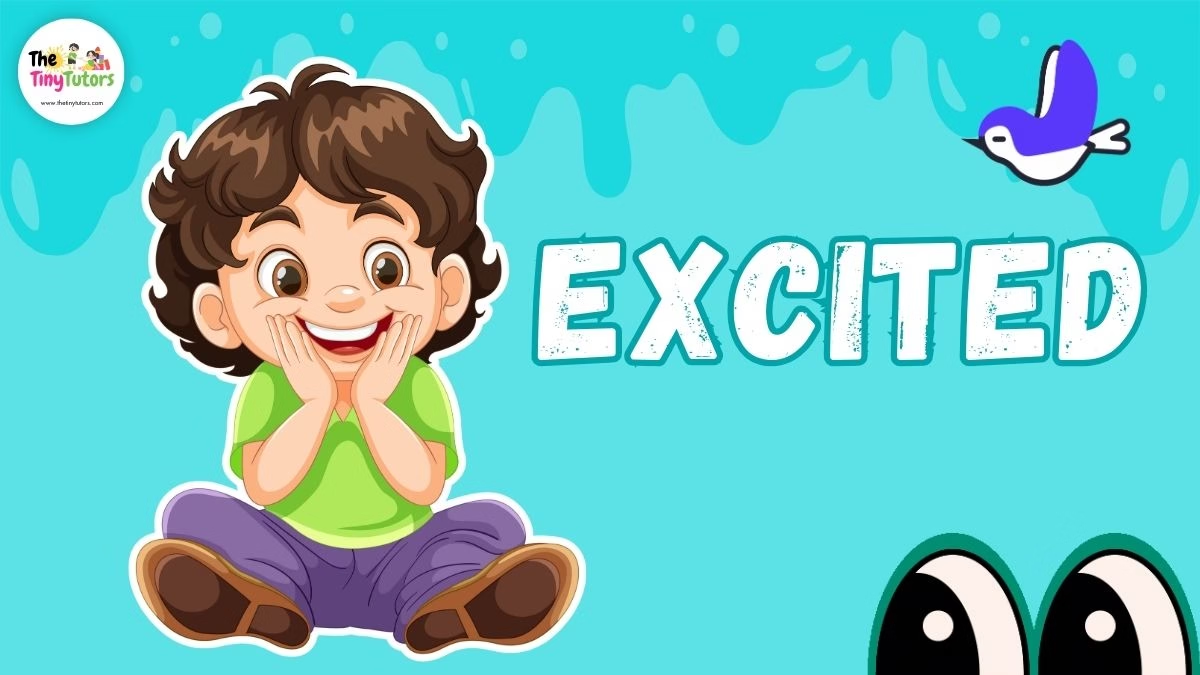
What Does “Excited” Mean?
Excited is one of the happiest emotions and feelings for kids. It happens when something great is coming — like going on a vacation, having a birthday party, or getting a new toy!
What Causes Excitement?
You might feel excited when:
-
You’re looking forward to something fun
-
You try something new
-
Something awesome just happened
Excitement is one of the most joyful feelings for kids.
Signs of Being Excited
When you’re excited, you may:
-
Jump up and down or wiggle a lot
-
Talk really fast
-
Smile, laugh, or feel like shouting “Yay!”
These fun reactions are all part of this bubbly emotion in emotions for kids.
How to Show Excitement
-
Share your happiness with family or friends
-
Get ready for what’s coming
Excitement is one of the most powerful feelings for kids that makes every special moment even better.
Fun Fact!
When you’re excited, time can fly by! That’s because your brain is super focused on the fun — another cool fact about emotions and feelings for kids.

